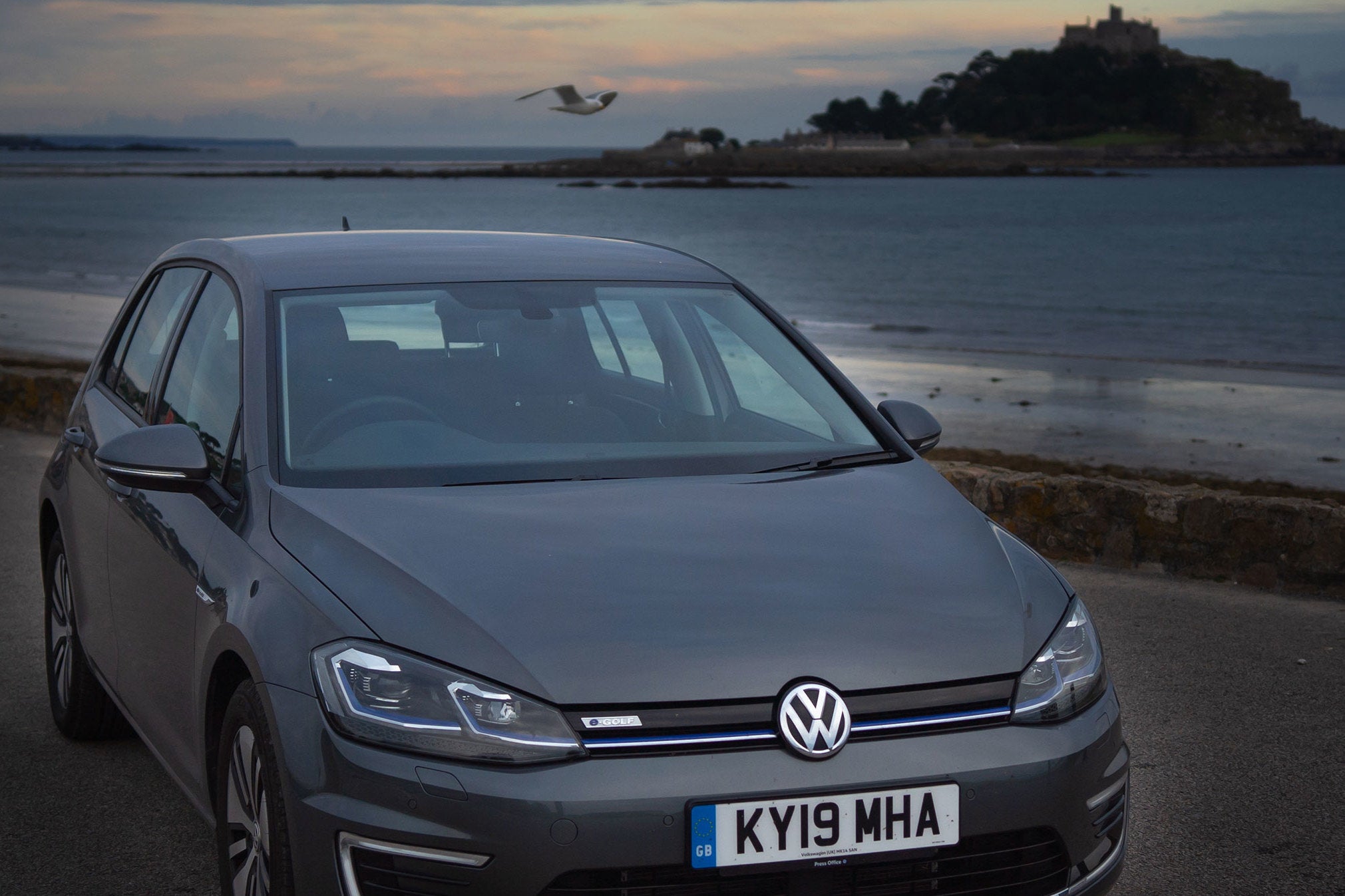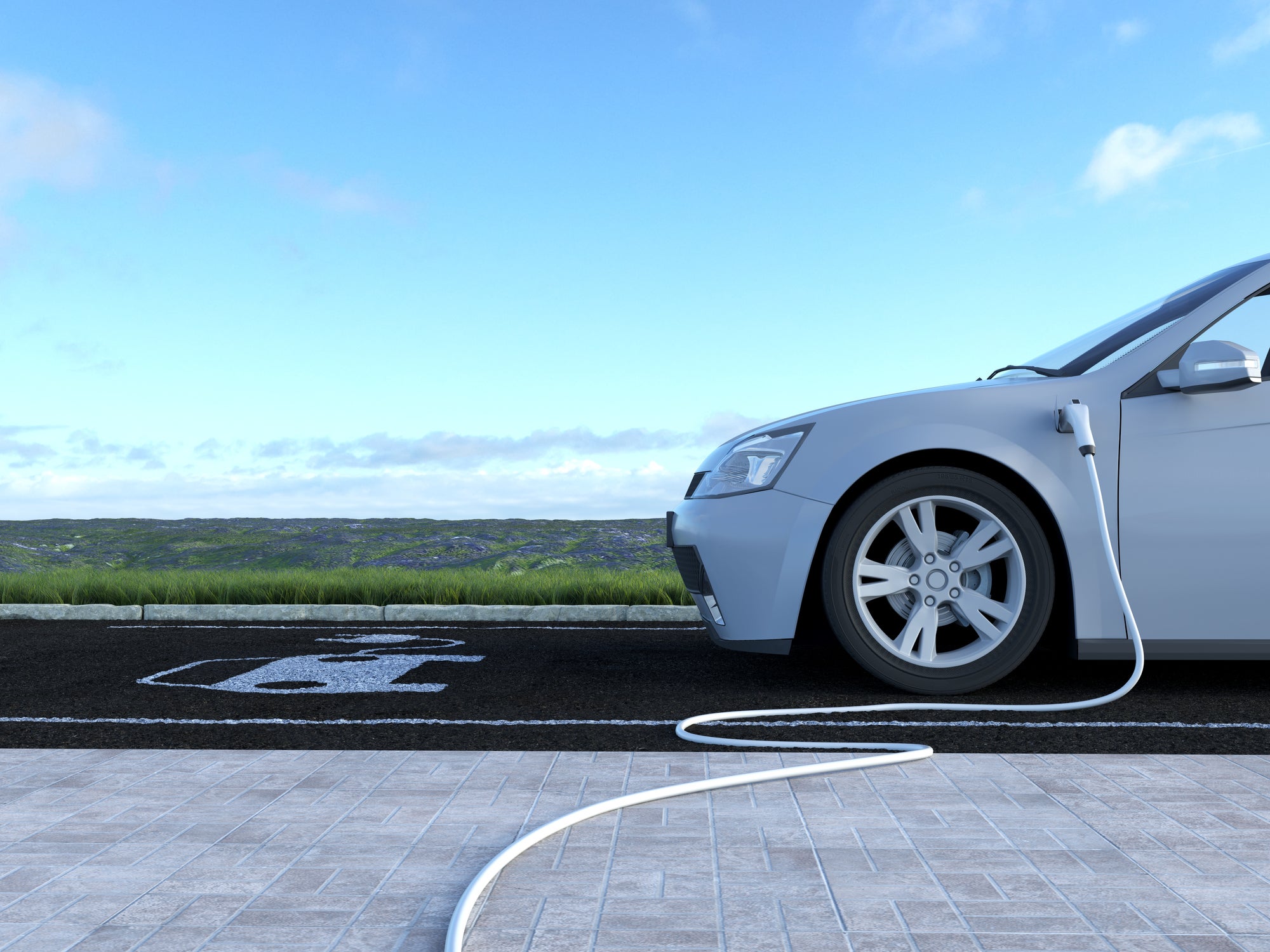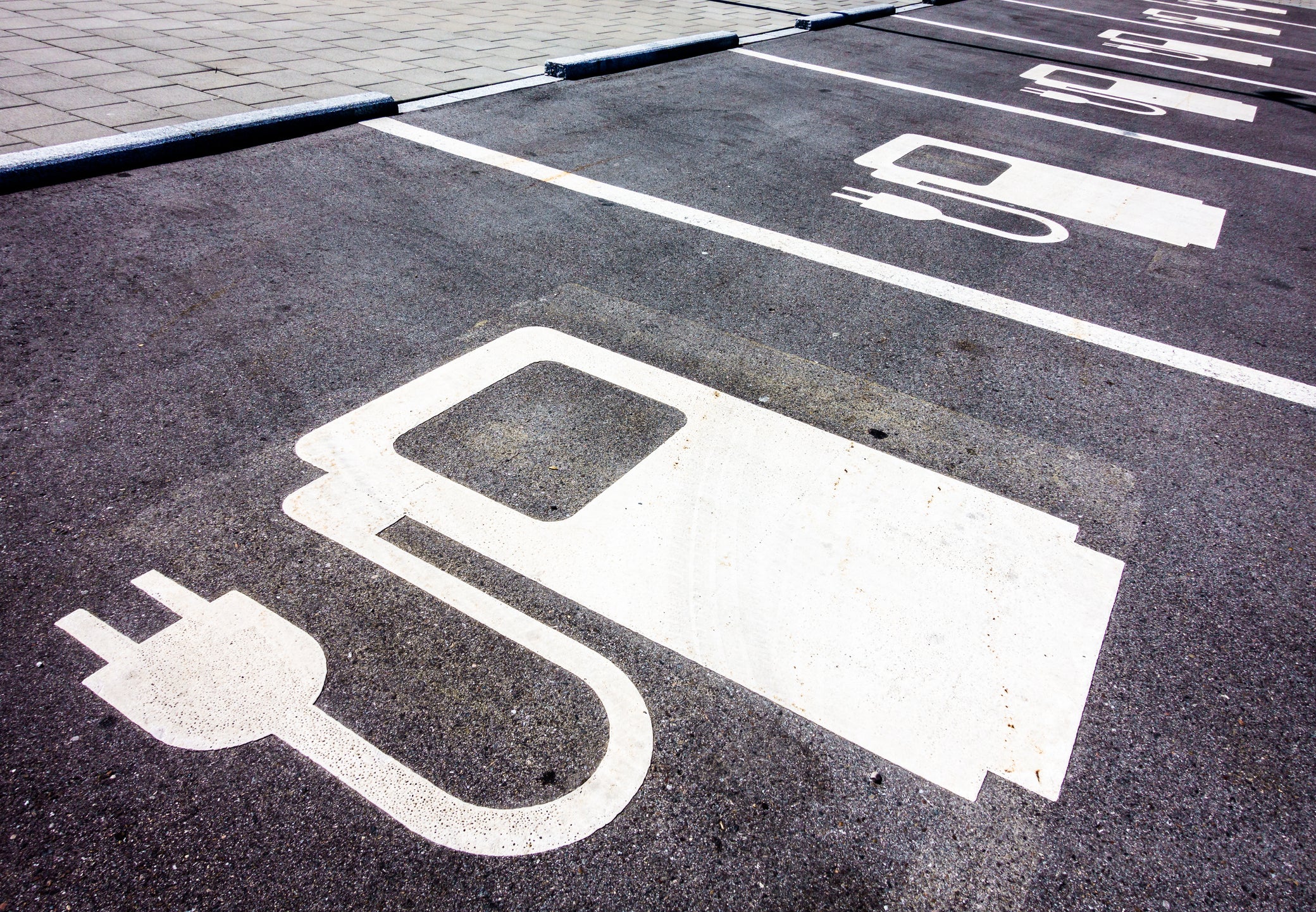‘I’m quickly realising that I am at the mercy of a lithium battery’: What it’s really like to drive 300 miles in an electric car
For the journey down, the intention was to stop twice. That quickly went out the window for Tom Richell because he started without a full battery: rookie mistake.


Your support helps us to tell the story
From reproductive rights to climate change to Big Tech, The Independent is on the ground when the story is developing. Whether it's investigating the financials of Elon Musk's pro-Trump PAC or producing our latest documentary, 'The A Word', which shines a light on the American women fighting for reproductive rights, we know how important it is to parse out the facts from the messaging.
At such a critical moment in US history, we need reporters on the ground. Your donation allows us to keep sending journalists to speak to both sides of the story.
The Independent is trusted by Americans across the entire political spectrum. And unlike many other quality news outlets, we choose not to lock Americans out of our reporting and analysis with paywalls. We believe quality journalism should be available to everyone, paid for by those who can afford it.
Your support makes all the difference.Nine hours into a journey that is supposed to take fewer than six, safe in the knowledge that there are at least two more to go, we pull into our fourth service station of the day. Another minute longer and we’d be stuck on the hard-shoulder, calling the AA. My partner calls her parents and explains the latest delay. I’m quickly realising that I am at the mercy of a lithium battery.
I’ve been interested in buying an electric car for some time now. Climate change is a hot button topic and the government is falling far short of their targets to achieve net zero carbon emissions by 2050, so surely I can do my bit?
I’d driven a couple of models of electric vehicle (EV) over short distances before, but never taken one on a long journey. The timing was perfect: with a summer staycation in the depths of Cornwall planned, my partner and I decided to reject the hefty train fare and make the journey down from London in an EV.
The car we’d be driving was the Volkswagen e-Golf. Aesthetically identical to a regular Golf, the car doesn’t shout about how different it is from its petrol and diesel counterparts with wacky designs like the Nissan Leaf and Tesla Model X do. A small blue ‘e’ on the front and back are all that differentiates it.
Not everyone wants to show the world how progressive they are, in fact some of that brashness has probably been a barrier for a lot of people in committing to an EV. They don’t want to stand out, rather quietly blend in and go about their business.
After a conversation with a few electric car owners, I soon realised the first hurdle to overcome is the battery range available. Our journey was around 300 miles. The e-Golf has an advertised range of 180 miles, so I’d only need to make one stop on the journey.“No problem”, I thought, naively.
There are a number of apps you need to download as an EV owner, as most charging points require mobile payment. I downloaded Ecotricity’s ‘Electric Highway’, ChargePoint, ZapMap, PodPoint, Polar, Source London and Charge Your Car. Each required individual account set up, card details, other personal information and EV information. Some require a monthly subscription payment plan... No thanks.

ZapMap brings all the charging station manufacturers into one place and allows you to plan your route, recommending when and where to stop.The app itself is pretty poor. It crashes a lot and is very slow. So I decided to do it manually, committing to one manufacturer, in this case Ecotricity due to their strong network of motorway spots, and plan it out myself using the locations of their charging points.
“Most of the charging stations don’t work” a friend warns me a week before our trip. She now experiences “battery anxiety” whenever she takes her Nissan Leaf on a long journey. Other people tell me the same thing.
For the journey down, the intention was to stop twice – at Bristol and Exeter. That quickly went out the window because we started without a full battery: rookie mistake.
Ecotricity’s charging station at our first stop, Heston services, was patchy. I set up the charge via the app, the electricity began to flow and I assumed we were in business. But the unit cut out after around 10 minutes before refusing to restart again. I was only alerted to this by email so, if I wasn’t a phone-obsessed-millennial it’s very unlikely I’d have been aware of the fault until I’d wasted half an hour in Costa. I plugged the car into the neighbouring station. Bizarrely, there was no interaction with the app for that one, so I have no idea whether I paid or not.
My friend now experiences “battery anxiety” whenever she takes her car on a long journey
Ecotricity’s power stations will only charge for 45 minutes, which won’t always get you to full. To add to that, while their network of charging points on motorways appears to be the best, most of them offer just one type of each connector. So if several people are driving the same car – you can expect quite some queue.
We were travelling on one of the busiest Fridays of the summer, on a route that took us through the hellish M5 and M4 interchange just north of Bristol. Traffic is frustrating in an EV. At the very point you’re finally out of the worst of it and gearing up to put your foot down, you will probably need to pull into a service station and spend the next hour charging.
Leaving Exeter I thought we that would be it. The car told us we had more than 130 miles on the battery and just 96 miles to travel. How naive I was.
The e-Golf comes with technology that analyses your previous journeys of the day and adjusts your battery range based on your style of driving, weather, traffic conditions and other factors. The results though appear to be inconsistent. With several hours of driving now behind us the car had had ample time to learn what it needed to, but still the potential range was too high for the type of driving it was being asked to do.
We burned through battery life very quickly as we left Devon and entered Cornwall and a fourth stop was suddenly looking like it would be required. Our battery range dropped from 130 to 100 miles in what seemed like a no more than 15 minutes and before we knew it our range was the same as our journey length. Thankfully there was one single charging point on our route.
By this point I’d seen the inside of more service stations on this single journey than I had in the past six months
Cornwall Services provided refuge for the final stop of the day. By this point I’d seen the inside of more service stations on this single journey than I had in the past six months. We only managed to charge the car up to 71% – but thankfully this was enough to get us to our destination.
We finally pulled into my in-laws’ driveway at 9pm, just over 11 hours after we left our flat in south west London.

After our tour of every service station in the south west, we were a little reticent to use the car for trips out once we got to Cornwall. But, actually, for use as a day-to-day vehicle, an electric car is fantastic.
Pulling off the line faster than anyone else on the road is addictive. Plugging it in overnight and never having to think about filling up with fuel is a load off your mind. The faint whir of the electric motor is civilised. And, for this sort of nipping around, a single charge could easily last for four to five days. Much more like it.
Charging up at home is surprisingly easy. There are no time limit restrictions like on the fast chargers on the motorway and your EV will slowly top itself up. Using a standard 3-pin plug isn’t fast, it can take anywhere between 12-17 hours dependent on the car. You can have a 7kw charger installed at your home for about £1,000, and government grants are available.
“Don’t use the air conditioning” a helpful friend pointed out to me as I was preparing for my journey back to London. It’s true there are a few things you can do to boost range. Lay off the added extras like air con and heated seats or just drive slowly. But where do you draw the line? This car costs £33,000, so why should you have to make compromises when shelling out that sort of cash?
We finally pulled into my partner’s parents’ driveway at nearly 9pm, just over 11 hours after we left our flat in south west London
With the benefit of experience, and starting the journey with a full battery, the drive back to London was easier than the trip down. Arriving home a little after 19:30 made for a journey time of nine hours (still a good three more than the petrol alternative). Due to some serious eco driving on the M4 I was able to skip the fourth stop and do it in just three. But many of the issues remained throughout the journey: the charging stations still wouldn’t get the car to 100% on the first attempt and I was fortunate, again, that I didn’t encounter a single other EV user who needed the same connector as me. If charging points don’t improve at the same rate as EV purchases then chaos is surely on the horizon.
Plenty has been written about the quality of the e-Golf, and in general EVs, over short distances. I can honestly say I far prefer them to traditional cars for day-to-day driving, by a long way. And that really is why it’s so galling to be unable to recommend one.
The Nissan Leaf owner who warned me about the charging stops not working told me she hires cars for long journeys. To me that is absurd. Owning a car is about more than just having a convenient commuting vehicle. It’s about the freedom it affords you. If you can’t wake up on a sunny Saturday morning and drive a couple of hours to the nearest beach, or pile the kids in and take them on holiday, what’s the point? While those situations may only make up a fraction of your driving habits, if the car you own actually restricts you from doing any of those things, is there any real value?
Join our commenting forum
Join thought-provoking conversations, follow other Independent readers and see their replies
Comments